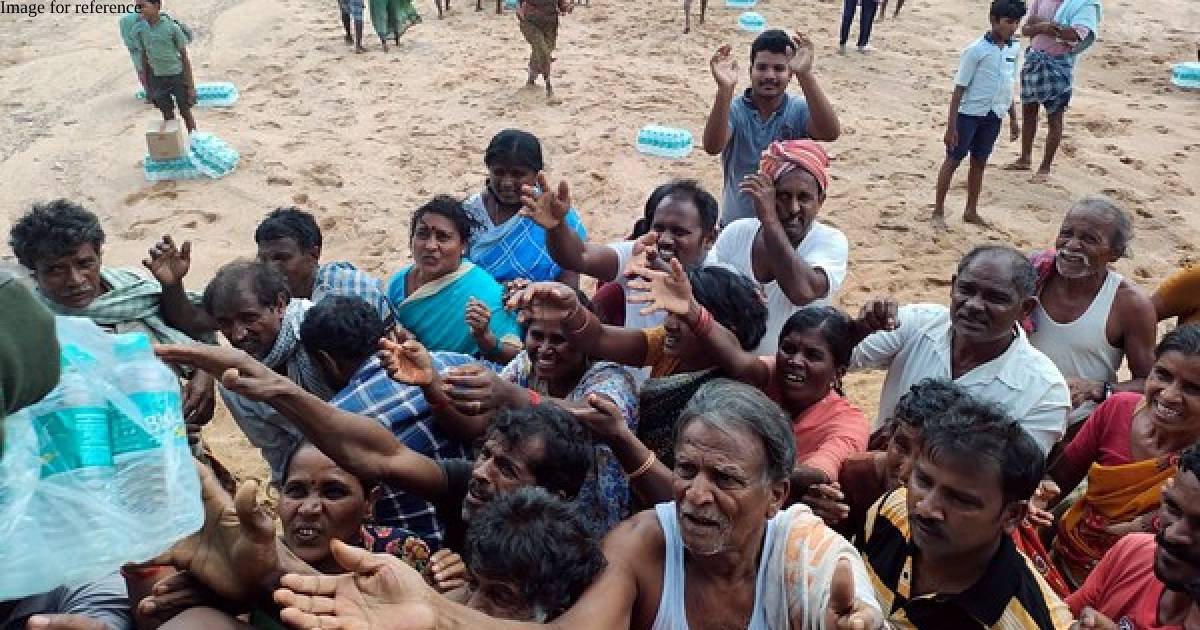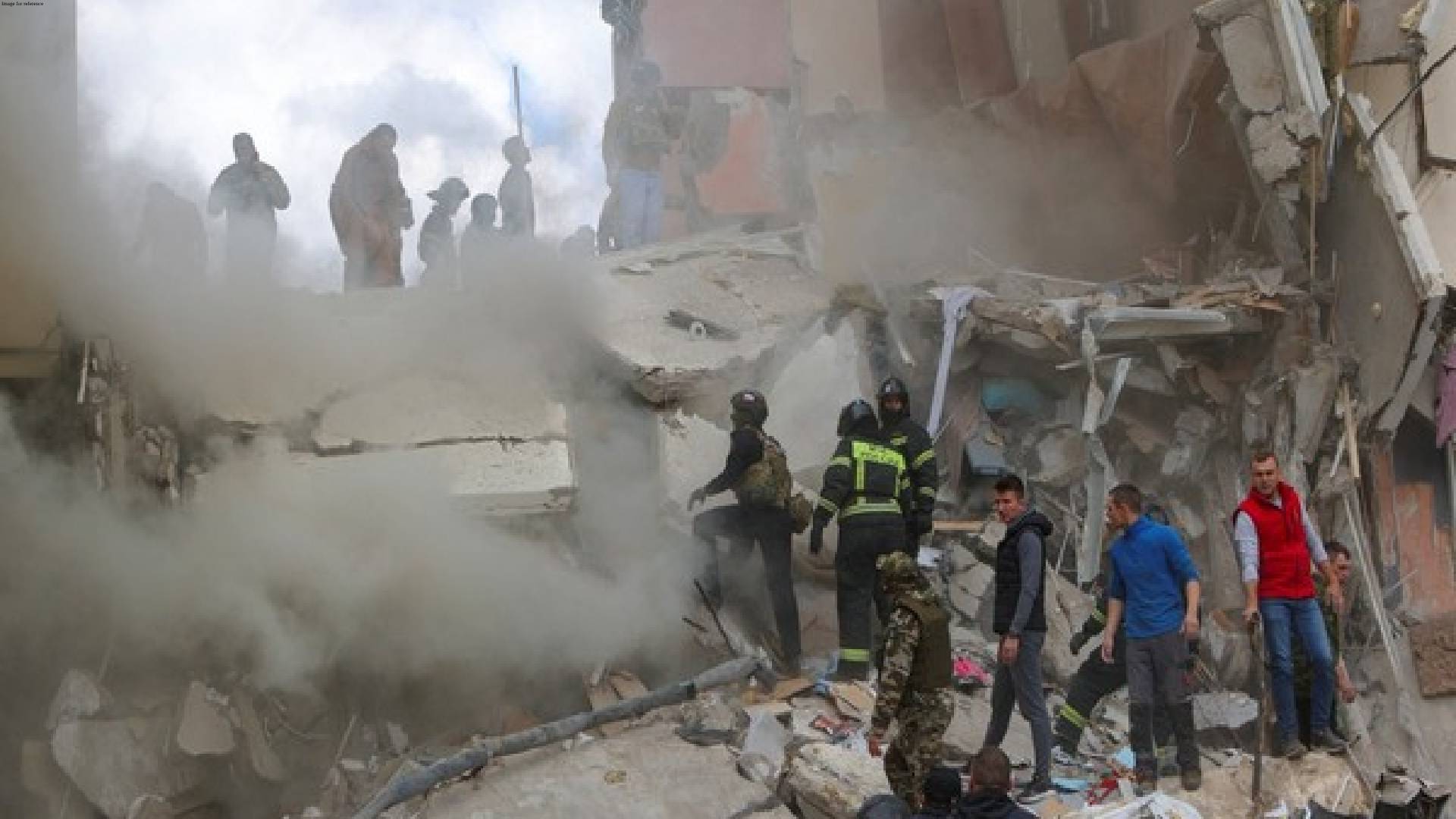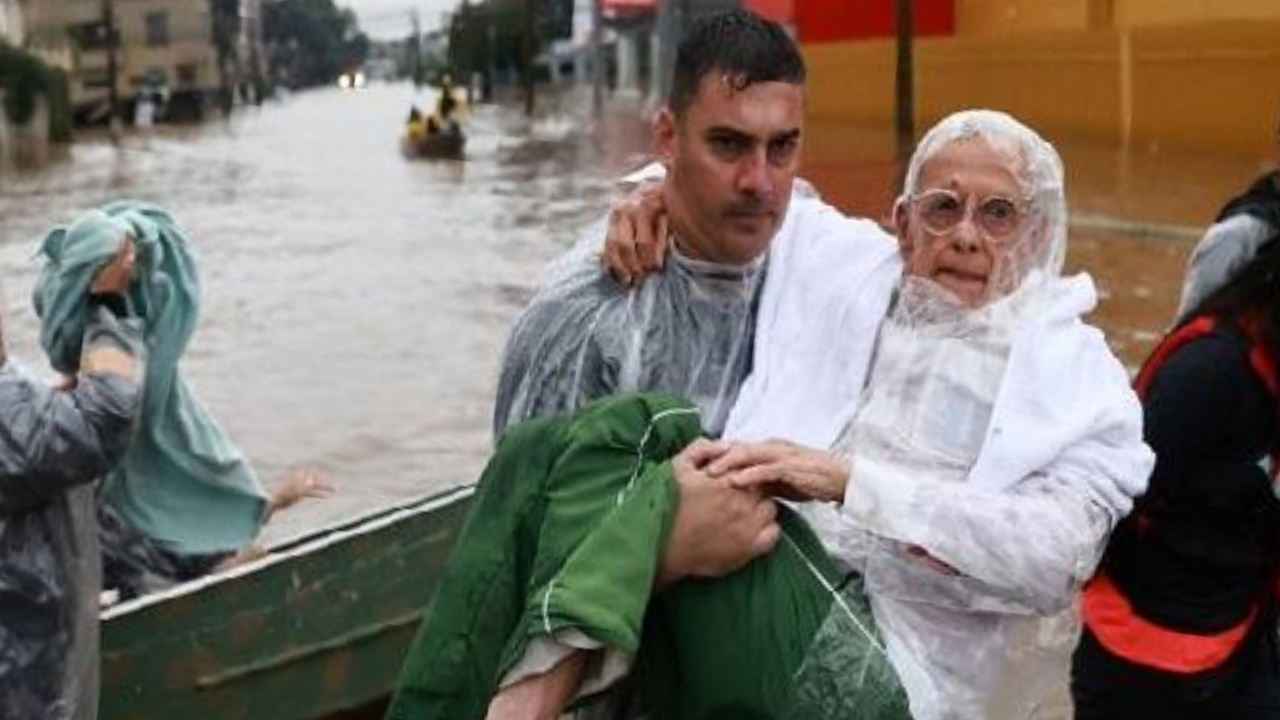Latest News
Hunger, diseases rife in Pakistan as flood-victims forced to live under sky

Islamabad: Record monsoon and heavy floods in Pakistan has given rise to hunger and various illnesses which have affected 660,120 people since July and the experts believe that the situation would aggravate in the coming days as the flood affectees are forced to live under the sky depriving the required resources.
According to Dawn, the Secretary general of Pakistan Medical Association-Karachi, Abdul Ghafoor Shoro said, "One of the major challenges currently being faced in the disaster areas is lack of shelter. Today, we visited Mirpurkhan, Tando Muhammad Khan and Tando Adam, but couldn't see a single government-run relief camp and people were forced to live under the sky." "People living under the open sky are forced to drink contaminated water. They are getting little bit of food either from non-profit organisations or some kind-hearted landlords."
"Skin infections are common as the vast majority of people had remained exposed to water for 10 to 15 days. The flooded areas are now breeding grounds for mosquitos but the people neither have shelter nor mosquito nets," he added.
The situation would aggravate in the coming days and there was an immediate need for urgent action, he added.
According to the latest July-September health department data, skin ailments and diarrhoeal diseases are rampant in flood-affected areas. A total of 149,551 people have been reported with diarrheal diseases while 142,739 people reported skin infections.
The cases of diarrhoea and dysentery are increasing in Sindh, the Dawn reported.
The official statistics recorded 132,485 cases of acute respiratory disease, 49,420 cases of suspected malaria, 101 cases of snakebite and 550 cases of a dog bite. There were 185,274 cases of other illnesses.
According to officials, over 15,000 cases of skin infection cases, around 14,000 cases of diarrhoeal diseases and more than 13,000 cases of acute respiratory illnesses are being reported daily at government-run medical camps.
However, workers engaged in relief efforts in the flood-hit districts believed that the actual number of cases was much higher as there were still several places in the province where the government was yet to reach and start relief operations, the Dawn reported.
According to health department officials, around 5m people have been displaced in the devastating floods, which damaged over 1,000 health facilities in Sindh.
Of them, 966 were partially damaged, whereas 126 were completely destroyed.
Sindh Health Minister Azra Pechuho on Sunday shared statistics of women affected by the flood which stated that over 47,000 pregnant women were in shelter camps in the province.
"Hundreds and thousands of people had contracted various diseases after the floods," she said.
The UN agency had also warned that many women and girls were at an increased risk of gender-based violence (GBV) as almost one million houses were damaged in the floods that spelled suffering for millions across Pakistan.
Menstruating and pregnant women are in a miserable state as they have no access to menstrual products or any place to defecate. The report said that about 650,000 pregnant women in flood-affected areas, including 73,000 expected to deliver in the next month, need maternal health services.
As heavy monsoon rains and floods continue to create havoc in the country, early 1,300 people have lost their lives in different provinces of the country.
The death toll since June has reached 1,290 with 29 people dying in the last 24 hours, the National Disaster Management Authority (NDMA) said on Saturday, reported Geo News.
As deadly floodwaters threaten to create secondary disasters, food is in short supply after water covered millions of acres of crops and wiped out hundreds of thousands of livestock. The prices of vegetables have gone up as the entire country is facing a shortage of vegetables.
Large parts of the country remain submerged - particularly the provinces of Balochistan, Khyber Pakhtunkhwa and Sindh in the south. At least 180 people have died in Sindh followed by Khyber Pakhtunkhwa (138) and Balochistan (125), reported Geo News.
The southern province of Sindh, which has been badly hit by the flooding, has asked for 1 million tents, while nearby Balochistan province has requested 100,000 tents. Since mid-June, when the monsoon began, more than 3,000 kilometres (1,864 miles) of road, 130 bridges and 495,000 homes have been damaged, according to NDMA's last situation report.
At least, 1,468,019 houses have been partially or totally damaged, while 736,459 livestock have been killed due to the floods.
"The heavy monsoon rains in Pakistan which started in mid-July 2022 are continuing in many parts of the country and have affected 116 districts (75 per cent) out of 154 districts in Pakistan. The most affected province is Sindh, followed by Balochistan," as per a WHO report. (ANI)

.jpg)
.jpg)
.jpg)








.png)
.jpg)

.jpg)
.jpg)
.jpg)
.jpg)
.jpg)
.jpg)
